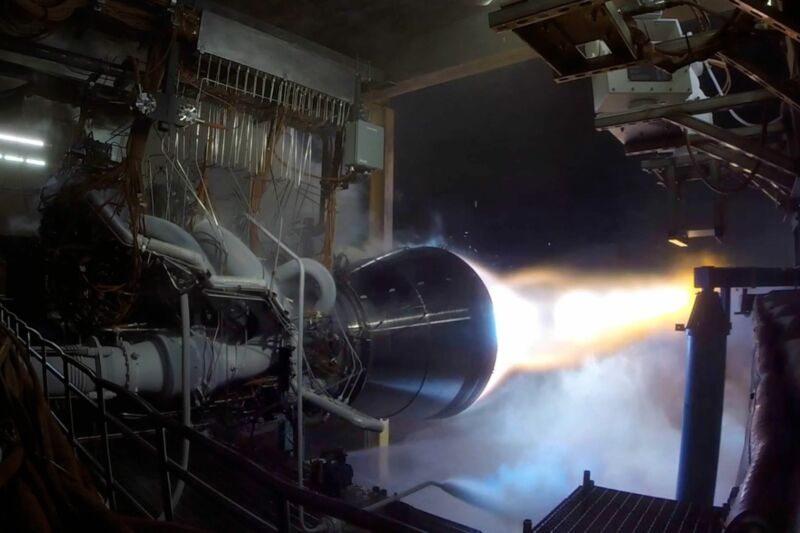
Blue Origin appears to have solved some development issues related to the turbopumps in its powerful BE-4 rocket engine.
United Launch Alliance Chief Executive Tory Bruno said Friday that the problem was "sorted out," and that the full-scale, flight-configured BE-4 engine is now accumulating a lot of time on the test stand. Bruno made his comments about one hour into The Space Show with David Livingston.
Bruno's company, ULA, is buying the BE-4 engine to provide thrust for the first stage of its upcoming Vulcan-Centaur rocket. This booster may make its debut next year, although ULA is still awaiting delivery of BE-4s for the first flight. Two of these large engines—each providing about 25-percent more thrust than the RS-25s used on the Space Shuttle—will power each Vulcan rocket.
Blue Origin has been hotfire-testing the BE-4 engine for about three years, but there have been rumors of development challenges. Bruno himself confirmed during an interview two months ago that the turbopumps, which feed propellant at high pressure into the BE-4 combustion chamber, still required some troubleshooting. "It isn’t easy, but we know we can do it," he told the Denver Business Journal in August.
Now, those problems have evidently been sorted out. Bruno said the focus at Blue Origin is shifting from development of the engine to ramping up production. "That is always a good moment in time in the development program, because that means your big technical stuff is behind you," he said during Friday's interview.
Blue Origin has spent the better part of the past decade developing the BE-4, which is a staged-combustion design running on methane and liquid oxygen. The engine will power both Vulcan-Centaur and also the company's New Glenn rocket, which is unlikely to debut before at least 2022. It may seem odd for competing rockets to use the same engine, but as Bruno has explained, it was less expensive for ULA to procure its main engines from Blue Origin than Aerojet Rocketdyne.
During his appearance on The Space Show, Bruno said ULA was still planning to reuse BE-4 engines by separating them from the rocket after it was done firing and recovering them. However, he declined to put a date on when that activity might begin.
He also expressed excitement about the performance of Vulcan's new Centaur V upper stage. The current Centaur III vehicle uses a single RL-10, but the new Centaur V will use a pair of uprated RL-10s. The new upper stage should provide more than twice as much energy thanks to its low mass and high performance. "I'm really excited about that," Bruno said. "It's a pretty incredible upper stage."
reader comments
302